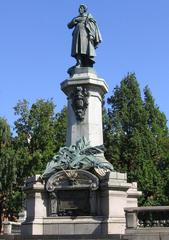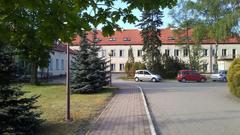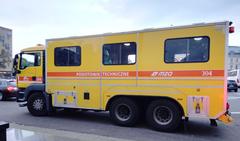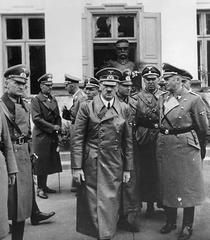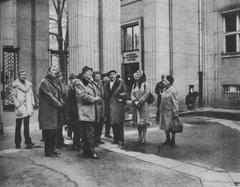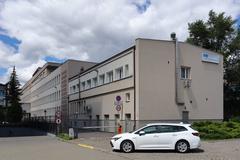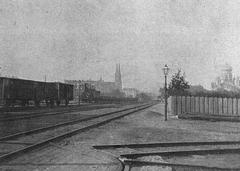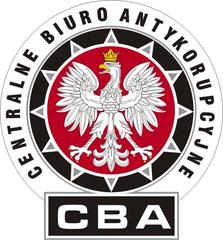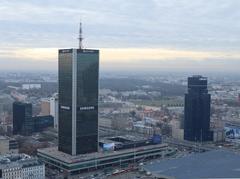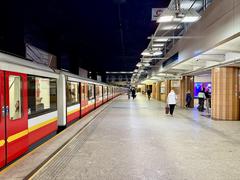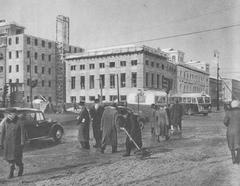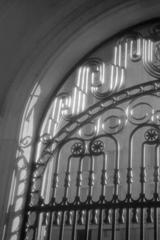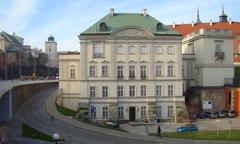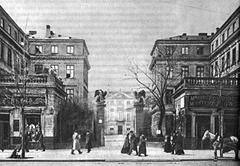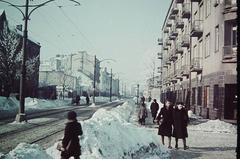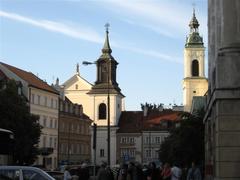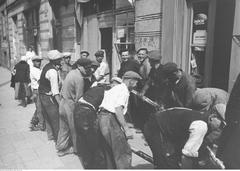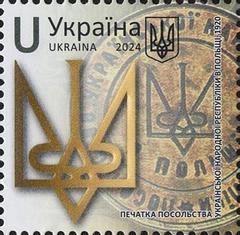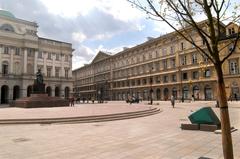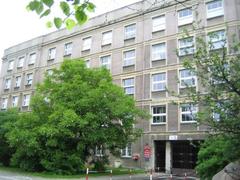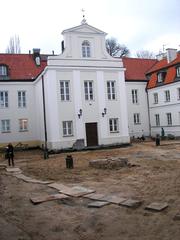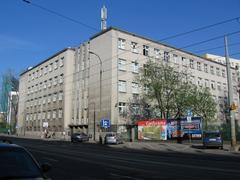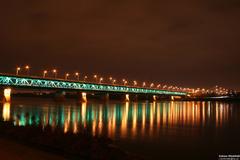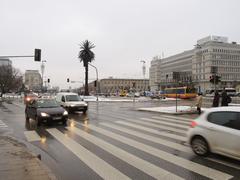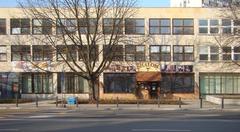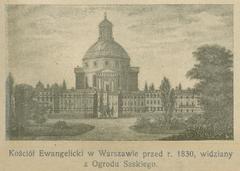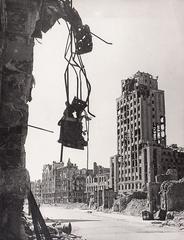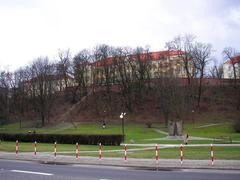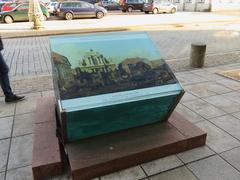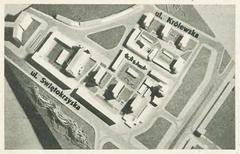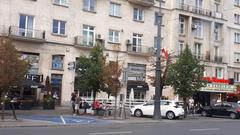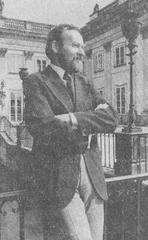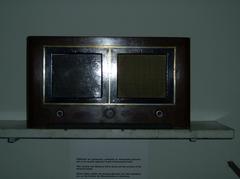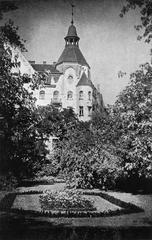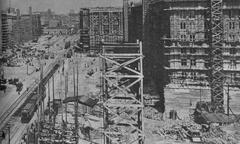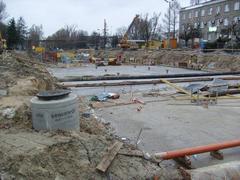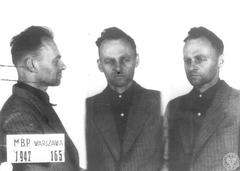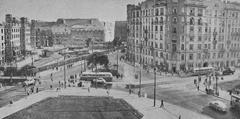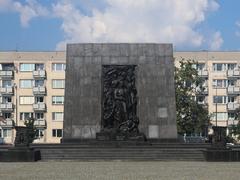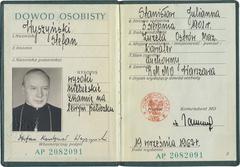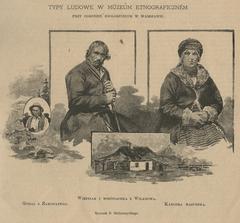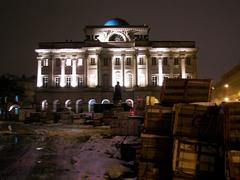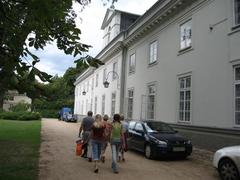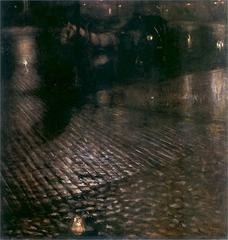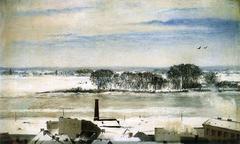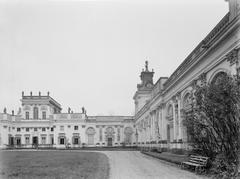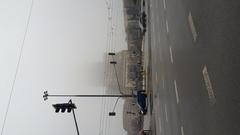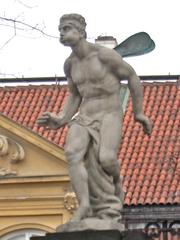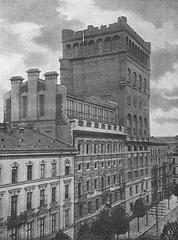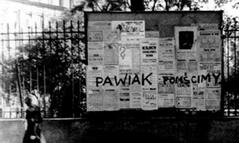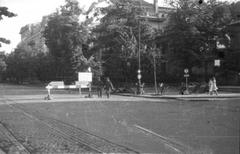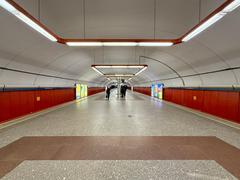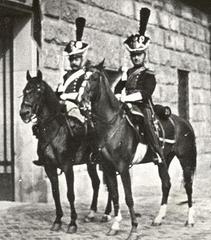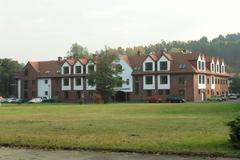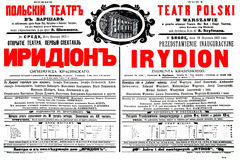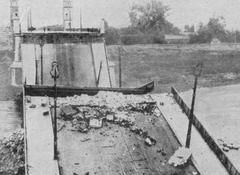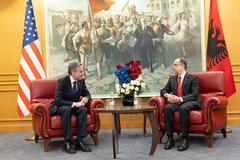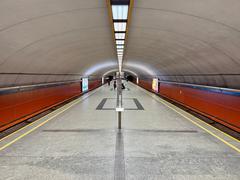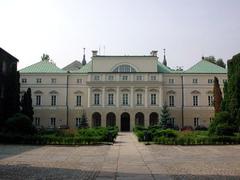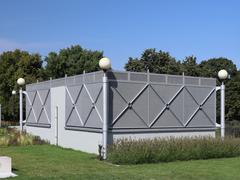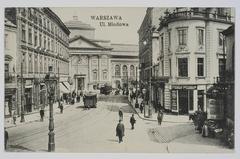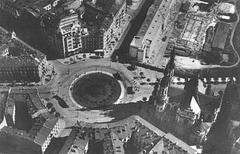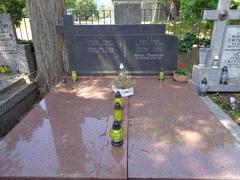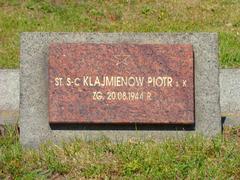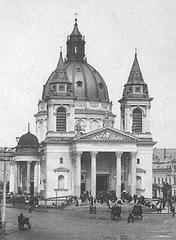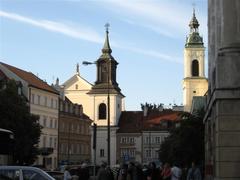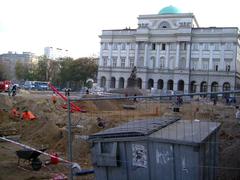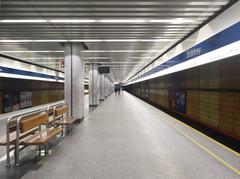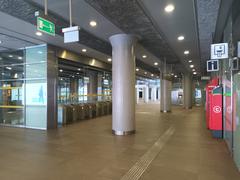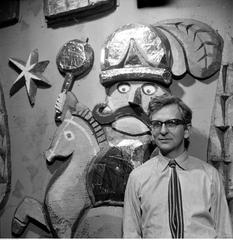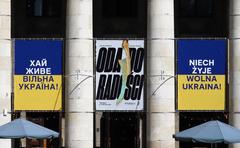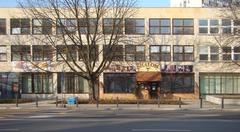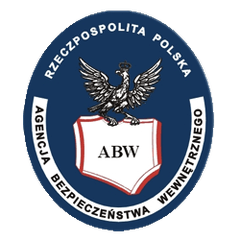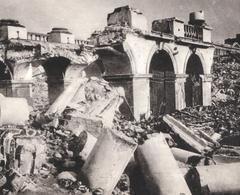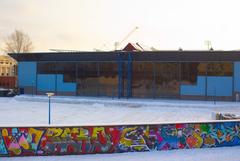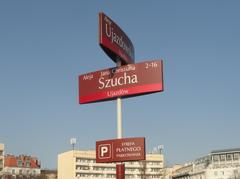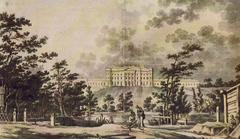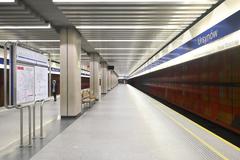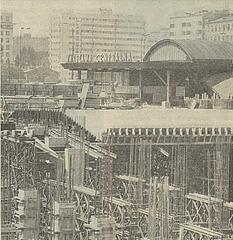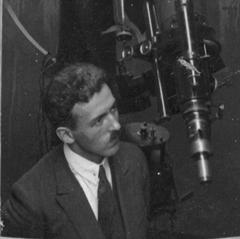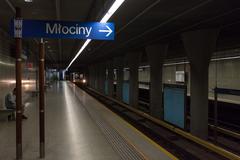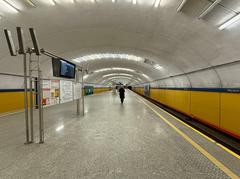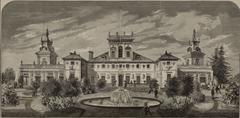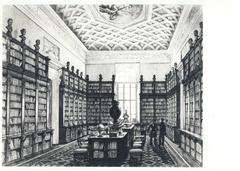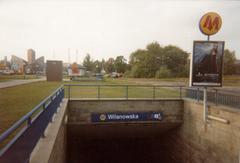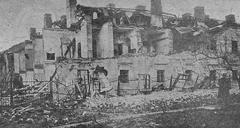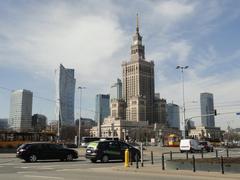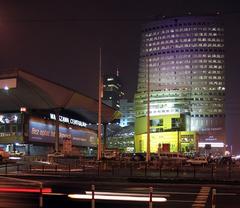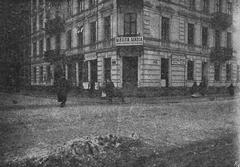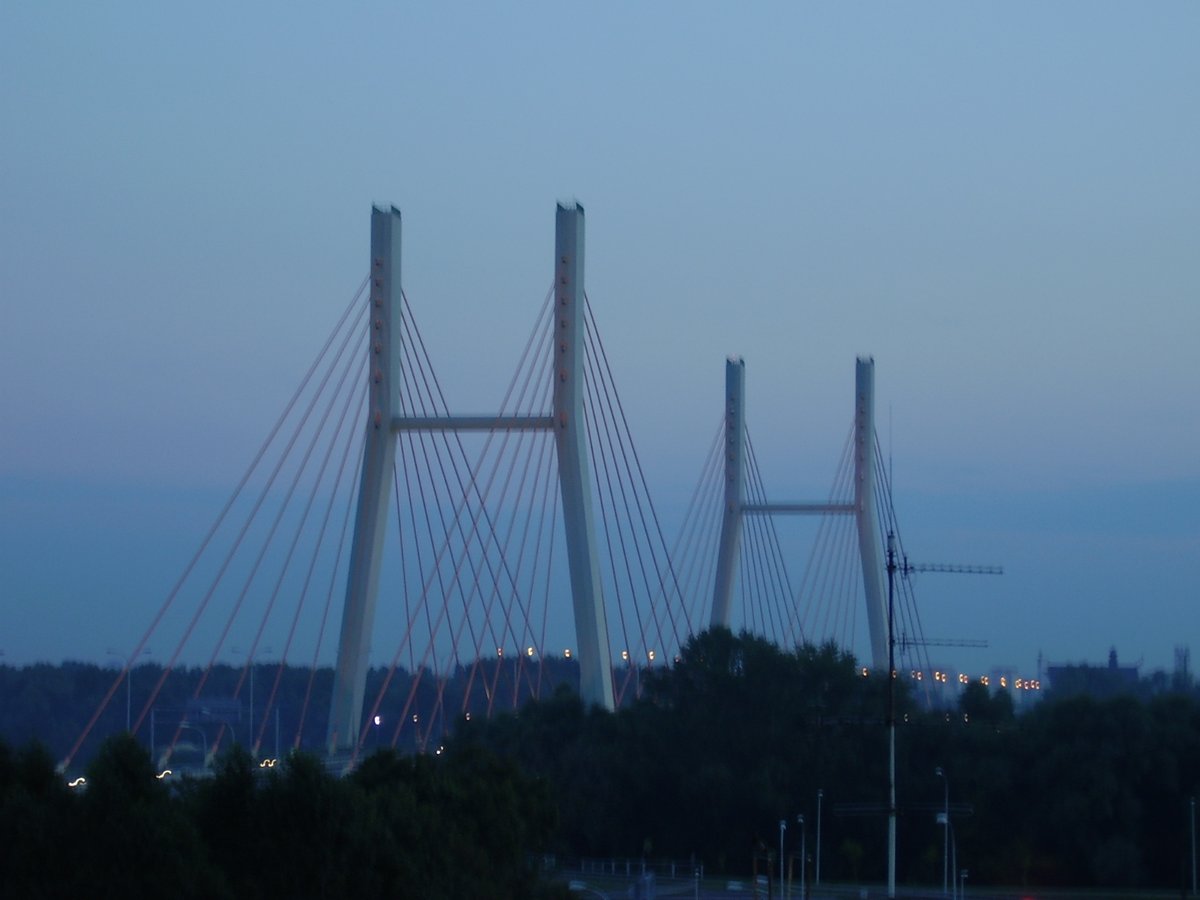
Visiting Hours, Tickets, and Travel Tips for Siekierkowski Bridge in Warsaw
Date: 17/08/2024
Introduction
The Siekierkowski Bridge, or Most Siekierkowski, stands as a beacon of modern engineering in Warsaw, Poland. Officially opened to the public on September 21, 2002, this cable-stayed bridge spans the Vistula River, linking the Mokotów, Praga Południe, and Wawer districts. Designed to alleviate traffic congestion and support the city’s transportation network, the bridge is a testament to Warsaw’s continuous efforts to modernize its infrastructure (Wikipedia). Stretching 500 meters across the river, the bridge is supported by two H-shaped pylons that each rise approximately 87 meters, making it not only functional but also an architectural marvel (Acciona). The Siekierkowski Bridge has garnered several awards for its innovative design and construction, including recognition from the Polish Ministry of Infrastructure. This comprehensive guide aims to offer insights into the bridge’s history, visitor information, and nearby attractions, providing valuable information for both tourists and history enthusiasts (BridgeLab).
Table of Contents
History and Construction
Historical Background
The Siekierkowski Bridge was officially opened to the public on September 21, 2002. Named after the Siekierki neighborhood on its western side, it was Warsaw’s southernmost bridge until the completion of the Anna Jagiellon Bridge in 2020 (Wikipedia).
Design and Engineering
This cable-stayed bridge stretches 500 meters (1,600 feet) across the Vistula River and is 33.38 meters (110 feet) wide. It features three lanes for vehicles, a pavement, and a cycle path in each direction. The structure is supported by two H-shaped pylons, each standing 87.07 meters (286 feet) high (Acciona).
Construction Process
The construction was managed by Transprojekt Gdansk Sp. z o.o., carried out by a joint venture including Campenon Bernard, Mostostal Warszawa, and Warbud. BBR Polska SP. Z o.o. handled the stay cable technology and incremental launching, overseen by Pascal Klein (BridgeLab).
The bridge’s construction involved three main elements:
- A 500-meter-long cable-stayed section over the main riverbed, supported by two 90.7-meter-high H-shaped towers.
- A 251-meter-long bridge based on a composite structure on the left bank lagoon.
- A 75.5-meter-long bridge on the right bank lagoon (Acciona).
Technological Innovations
The project incorporated advanced engineering techniques, notably the incremental launching method for the composite deck, minimizing environmental impact on the Vistula River and surrounding areas (BridgeLab).
Awards and Recognition
The bridge has received several accolades for its design and construction quality, including a prize from the Polish Ministry of Infrastructure in the category of Architecture and Construction (Acciona).
Economic and Social Impact
The Siekierkowski Bridge plays a crucial role in Warsaw’s transportation network, improving traffic flow and reducing congestion in the southern parts of the city (Wikipedia).
Sustainability and Environmental Considerations
Emphasizing sustainability, the construction used techniques that minimized environmental impact and included features promoting sustainable transportation like dedicated cycle paths and pedestrian walkways (Acciona).
Future Prospects
The bridge will continue to be a vital component of Warsaw’s infrastructure, with future projects likely drawing on the lessons learned from its construction (Acciona).
Visitor Information
Visiting Hours
The Siekierkowski Bridge is accessible to pedestrians and cyclists at all times. Vehicle traffic follows standard city regulations.
Ticket Information
There are no tickets required to visit or cross the Siekierkowski Bridge.
Guided Tours and Special Events
While there are no official guided tours, visitors can explore the bridge and its surroundings independently. Special events occasionally take place in the area, especially during city festivals.
Accessibility
The bridge is equipped with pedestrian walkways and cycle paths, making it accessible for both pedestrians and cyclists.
Nearby Attractions
Fort X ‘Augustówka’
A historic military fort located nearby, offering a glimpse into Warsaw’s military history.
Sanctuary in Warszawa Siekierki
A place of worship and reflection, this sanctuary offers a peaceful respite for visitors.
Park nad Balatonem w Warszawie
A beautiful park perfect for picnics, leisurely walks, and enjoying nature.
FAQ
What are the visiting hours of the Siekierkowski Bridge? The bridge is accessible to pedestrians and cyclists at all times.
Are there guided tours available at the Siekierkowski Bridge? There are no official guided tours, but visitors can explore independently.
What are the nearby attractions to Siekierkowski Bridge? Nearby attractions include Fort X ‘Augustówka’, the Sanctuary in Warszawa Siekierki, and Park nad Balatonem w Warszawie.
Conclusion
The Siekierkowski Bridge is not just an engineering marvel but also a vital part of Warsaw’s infrastructure and a point of interest for visitors. Its history, technological innovations, and strategic importance make it a must-visit landmark. Whether you’re interested in its engineering, looking for a scenic walk, or exploring nearby attractions, the Siekierkowski Bridge offers something for everyone.
Call to Action
Explore more about Warsaw’s landmarks by visiting our other articles, following us on social media, and downloading our mobile app Audiala for more travel tips and updates.
References
- Wikipedia, 2022, Various Authors source url
- Acciona, 2022, Acciona Team source url
- BridgeLab, 2022, BridgeLab Team source url
- Where and When, 2022, Travel Authors source url
- Plan Poland, 2022, Travel Authors source url




